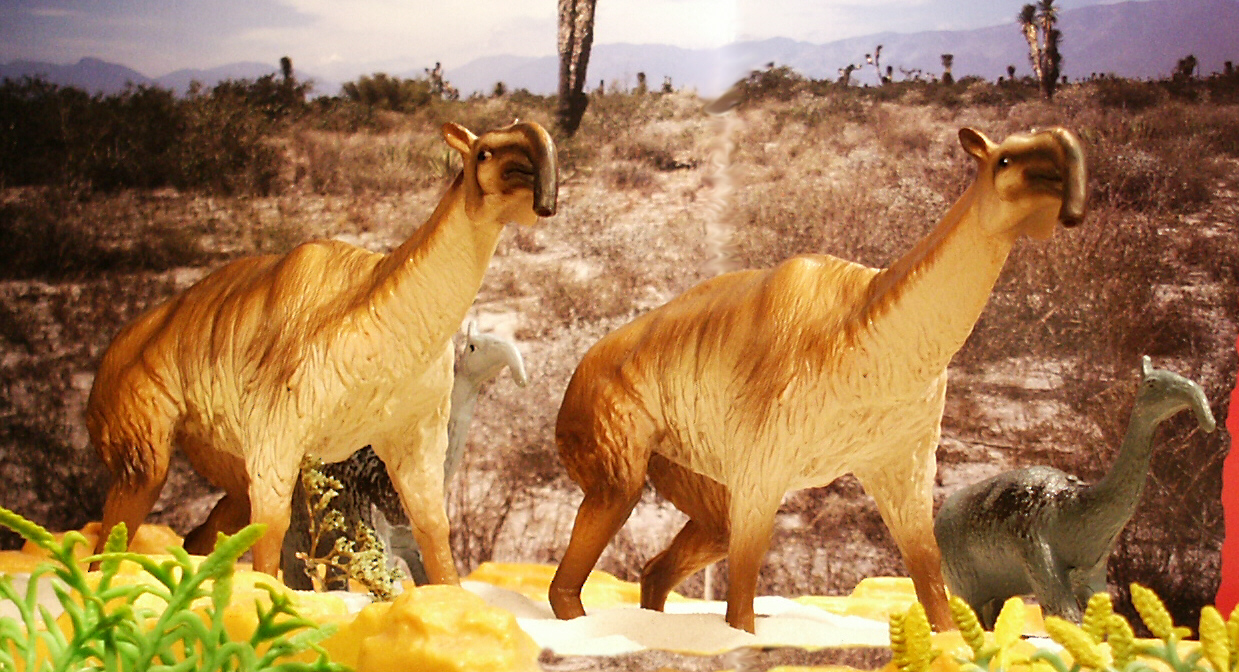
From the Dinosaur Collector: The Pleistocene
of South America supported a unique Megafauna. The Schleich Prehistoric Mammal line is strongly suggestive of the last two WWPB (Walking with Prehistoric Beasts) episodes. The chapter on South American mammals featured the Macrauchenia, the Saber toothed cat Smilodon and giant Sloth Megatherium that are dead ringers for the new Schleich figures. Updated 080106
Age of Mammals Diorama More Diorama and pages
South America was isolated for much of the early part of the age of mammals. Primates and rodents managed to raft over but modern carnivores and grazing animals were absent. Birds and marsupials were the carnivores, while two local families, the extinct notoungulates and edentates, evolved to fill the spot open for browsers and grazers. Notoungulates evolved into a variety of horse, camel, elephant and hippo forms and are unrelated to any living groups. Later the group declined and by the time ancestors of Smilodon had evolved to become the dominate predators, after a land bridge reconnected the Americas, only one member survived, Macrauchenia. In appearance it seems to be an awkward cross between a camel and elephant. The combination of high crowned teeth and trunk made it a versatile animal capable of browsing in the trees or the on the ground.

Schleich Macrauchenia the best version of this odd animal on the market and the gray JA RU Macrauchenia the most common version found.
Smilodon (Knife Tooth) was over 6 feet at the shoulder. Specialized in the hunting of large herbivores the saber teeth were actually rather thin and fragile. How the teeth were used is speculative but one idea is there were use to pierce the thick hides and deliver the coup de grace.
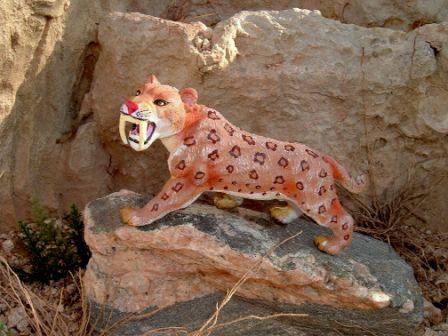
Smilodon custom painted by Fred R. Hinojosa.
Smilodon populator was larger than it's relative
in North America, Smilodon fatalis. Found in Argentina and
Brazil It appears to specialized to hunt large
plant eaters and there is some evidence it may have lived in groups like modern
lions.
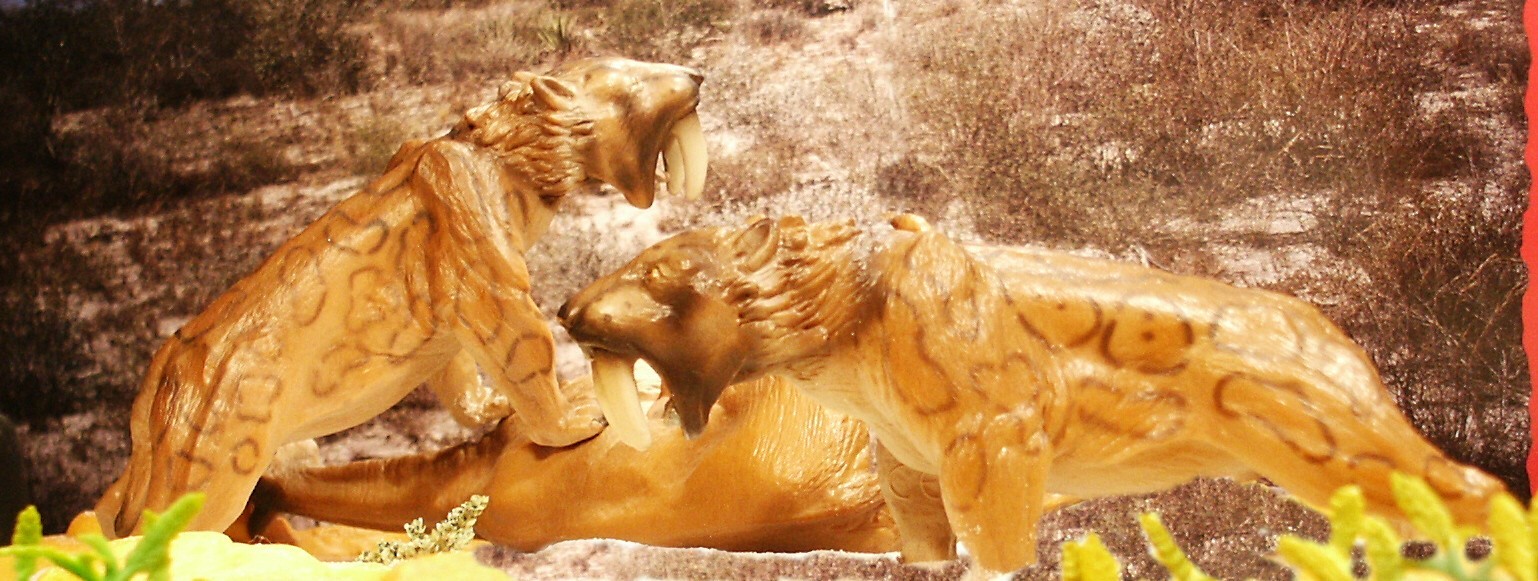
The Schleich Smilodon strongly resembles the family of half tooth as see in the documentary Walking with Prehistoric Beasts (WWPB). Smilodon is probably the most widely produced Prehistoric mammal figure seen in toy lines and can be identified by three characteristics: these are the saber teeth, the short tail and the short hind limbs. Both Miller and Marx included the figure in their mammal groups. The figure has evolved quite a bit over time and the Schleich new release demonstrates these changes. In older toy lines lines, Smilodon had a long tail, although it was actually a short-tailed species. Marx got the tail right but configured the body to make the limbs appear of equal length. Schleich distinctly captures the hyena-like posture.
Armadillos and the
Sloth are edentates and were originally restricted to South America. The family
shares well-known
features such
as simple tooth structure and walking on the insides of the feet. Members of
this family continued to prosper after the land bridge to North America was
reestablished,
spreading into the American Southwest and Florida.
Megatherium
(Large Beast),
the largest of the groundsloth's,
lived in South America and North America. At 18 feet and weighing 4 tons
with bony nodules embedded in its skin like armor it must have been formidable
prey. The ancestors of Dire Wolves are though to have migrated south with the
land bridge and evolved into specialists hunting mega beasts in South America then migrated north again. Megatherium was common throughout South America during the Pliocene and Pleistocene. With a
length of up to 5-6 meters, they were larger and more heavily built than modern
elephants! A closely related genus (Eremotherium ) occurred in
North America during the Pleistocene, but appears to have been largely
restricted to the area that is now Florida. 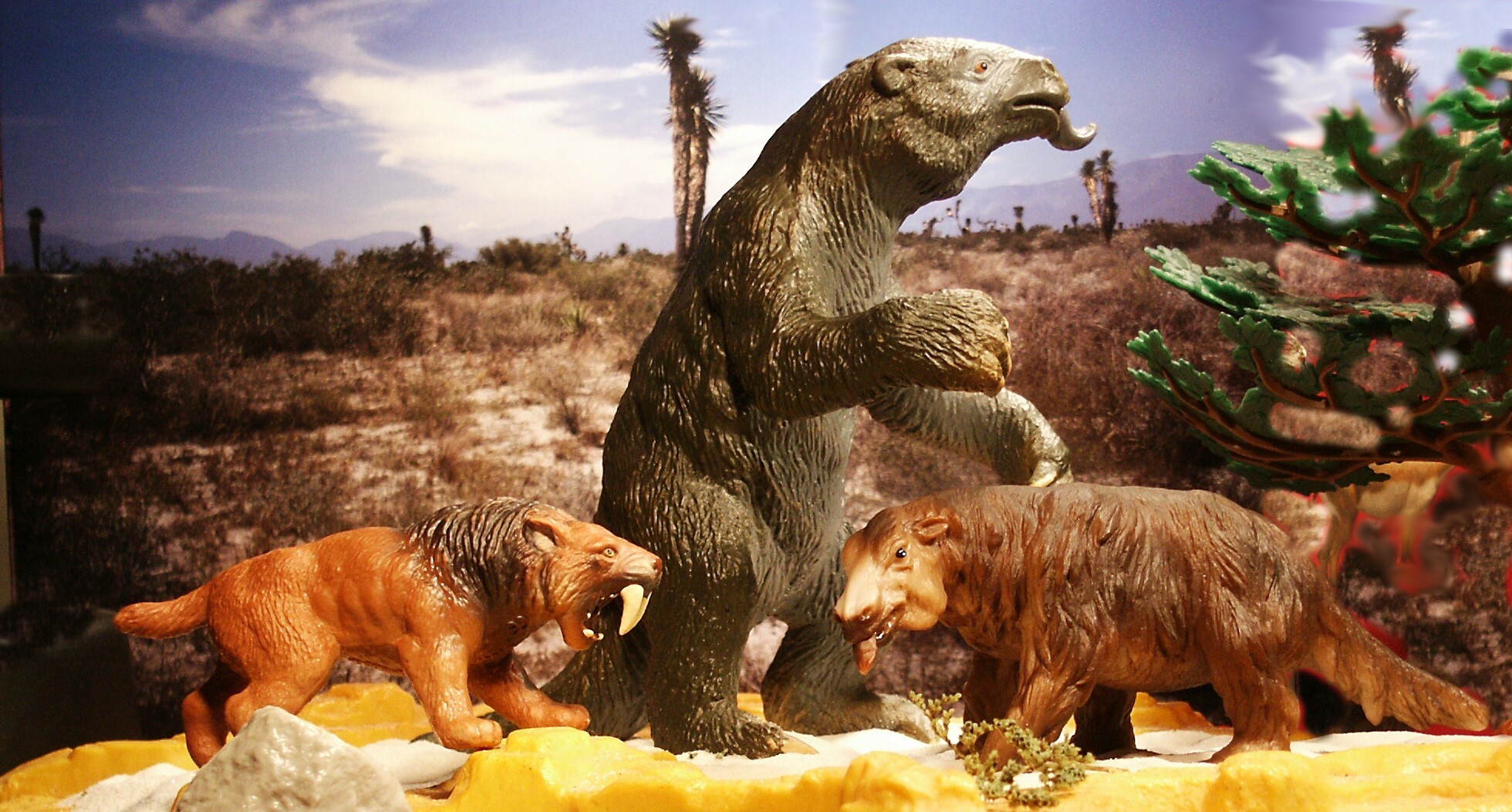
Bullyland Smilodon and Megatherium. The Schleich Megatherium has broken way from the classic bipedal posture feeding amongst the trees seen in the Marx interpretation and followed by most others since. Bullyland and UHA opted for this posture.
Glyptodon (carved tooth) was preyed upon by the prehistoric Jaguars who attacked the front of the head piercing the skull. Glyptodonts proper were found throughout South America from the Tertiary period through the Pleistocene. A close relative, the Glyptotherium, was found in Central America and southern North America during the Late Pleistocene. Both became extinct at the close of the Late Pleistocene. The glyptodont Doedicurus (pestle tail), had an armored tail which ended in a viciously spiked club, a weapon of defense. Phorusrhacos (Rag Bearer) the other big bird at 7 - 8 feet tall. This predator evolved while South America was isolated and had no modern mammalian predators. It doesn't seem to have been effected much by the arrival of competition and and even spread widely through North America.
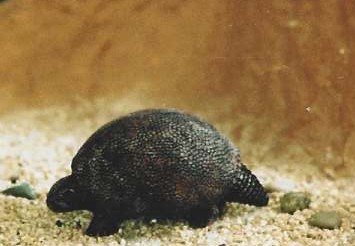
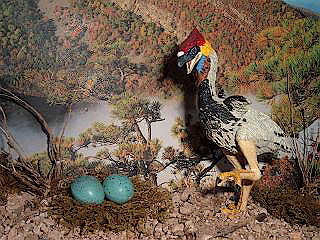
Custom diorama submitted by Riff Smith. Giant Roc from Tales of Sinbad from X Plus: Fred R. Hinojosa.
Glyptodon was from the Armadillo branch of the family. The largest were about the size of a Volkswagen. There are two general kinds of Glyptodont: the ones with clubs on their tails and the ones without clubs. They are a mammal version of ankylosaurs.
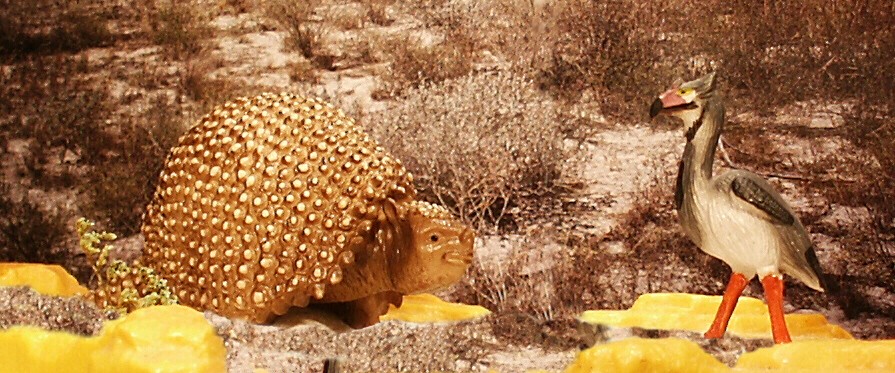
The Schleich Glyptodont diverged from WWPB and picked the club less glyptodont variety. Starlux Phorusrhacos one of the French companies best figures.
?
?